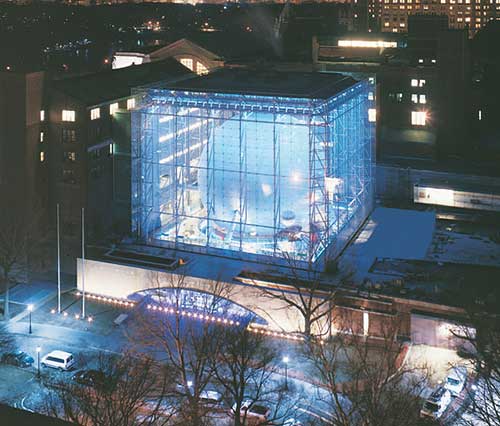Glass Act: Where Beauty and Engineering Clearly Meet
Learning Objectives:
- Examine the major components of bolted structural glazing systems and assess how their essential relationships to each other impact design and performance.
- Recognize the specific design, testing and engineering issues related to the fundamental properties and manufacturing processes of glass as it is used in bolted structural glazing systems.
- Compare the basic types of bolted glazing structural glazing support systems and how they function in various applications.
Credits:
From storefronts and lobbies to the most stunning signature buildings in the world, the expanses of glass continue to get bigger, taller, more complex and ever more transparent. The metaphors vary - disappearing walls, invisible structure, bringing the outside in, dissolving the boundaries between the building and the street and sky - but the basic desire for the most transparent structure possible has driven the development of glass architectural material for about two thousand years.
The current state of the art is the bolted structural glazing system, also referred to as point supported glazing: glass, stainless steel fittings and increasingly imaginative support or back-up structures conceived and executed as an integrated unit. As glass structures get clearer and buildings more see-through, the science and skill required to implement them gets increasingly complex. This article will outline the still continuing evolution of bolted structural glazing systems, the precise engineering, stringent testing and technological innovations in each of their major elements, particularly the glass itself, and the critical importance of bringing together the design, engineering, manufacturing and fabrication of these interacting elements into a single system, a sum very much greater than its component parts.
Frame Free
Throughout the colorful history of glass in buildings, from the first not-very-clear windows in first century Rome through the stained glass of medieval cathedrals, the Sun King's mirrors in Versailles and the 293,635 panes of glass in London's famous Crystal Palace in 1851, glass was always captured in a frame. Individual panes of glass became larger in the 19th century, with the inventions that led to mass production, but frames of lead, steel or aluminum were still required. Only in the 1960s, predominantly in Europe, came the invention of the patch plate hardware fittings that could connect individual glass lites into a matrix without frames.
These early systems were a remarkable advance in transparency. They typically were suspended assemblies, consisting of panels of face glass connected to vertically oriented glass fins by sliding knuckle hinges and corner patches. The face glass hung from adjustable steel rods along the top of the structure, and was stiffened by the fins, which hung independently from the face glass and were designed to take lateral loads. The vertical and horizontal joints separating the individual lites of glass were typically sealed with two-part epoxy.
 |
One of the most celebrated and spectacular examples of bolted structural glazing systems in the world is the Rose Center for Earth and Space, American Museum of Natural History, New York City, NY. Architect: Polshek Partnership Architects LLP Photo courtesy of W&W Glass, LLC |
Â









